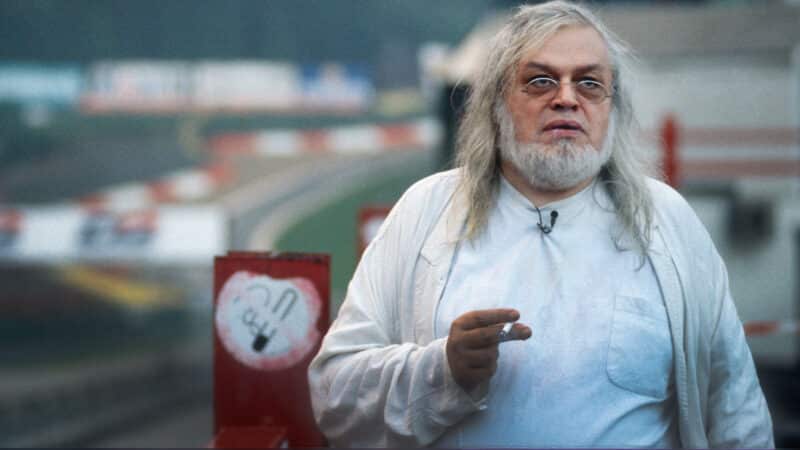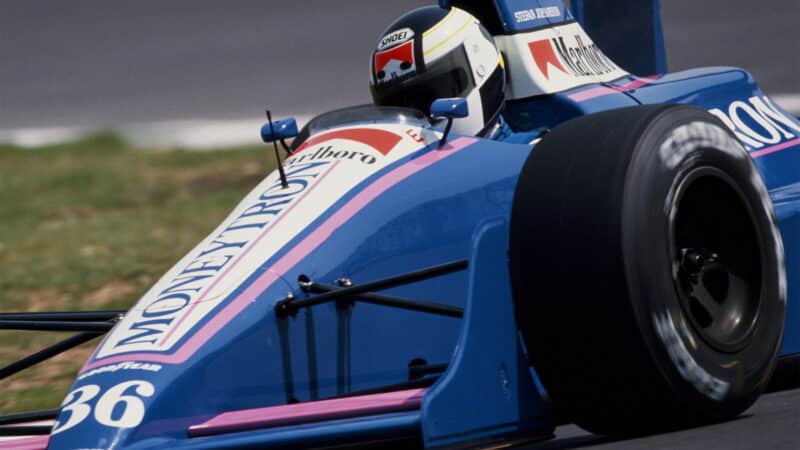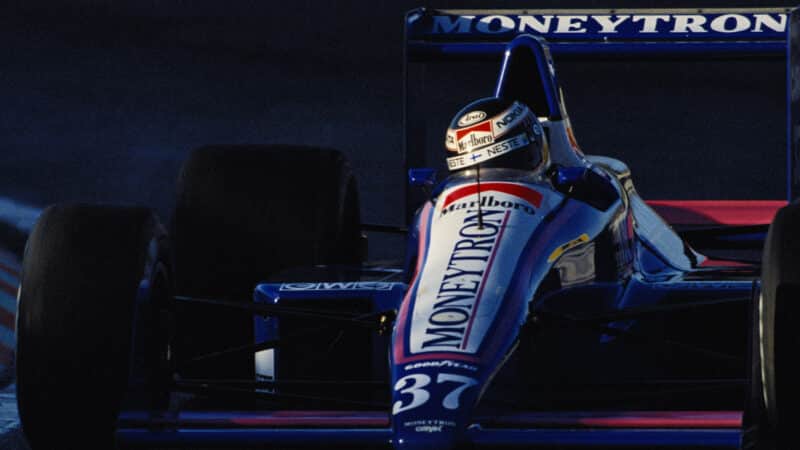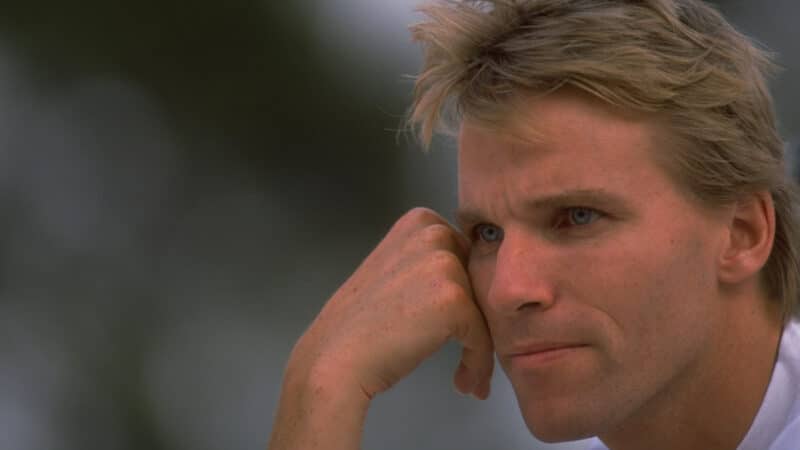But though his resultant multi-millions were welcomed in F1, he was not.
Johansson, however, saw a different side.
A wayward force of nature, just last month he had been served with another custodial sentence for financial irregularities.
“He came on board after I’d signed,” says the Swede. “My first impression was, well… but as we got to know each other better over the season I realised that his public image – something he was very aware of – was much different to the private man.
“I liked him and enjoyed his company. He was funny, gentle, kind and kept his promises – although sometimes we sat in his office for days, refusing to leave until the money was transferred.”
Johansson was striving to resurrect his career having fallen out of favour at Ferrari and McLaren.
Mike Earle’s Onyx had hoped to graduate in 1988 with its Formula 3000 champion Stefano Modena and Marlboro money – plus ‘encouragement’ from none other than Enzo Ferrari – but the deal fell through.
The team from Littlehampton, however, had big ideas still and for 1989 entered two of designer Alan Jenkins’ neat ORE-1, with its customer Cosworth DFR and six-speed transverse gearbox by Xtrac.
The project ran very late – being clamped outside the venue of its London press launch didn’t help! – and Johansson and team-mate Bertrand Gachot failed to progress beyond Friday morning’s pre-qualifying for the Brazilian Grand Prix.
“That was brutal,” says Johansson. “You’d get to the track at 6am and there’d be no good-mornings; you’d just growl at everybody because you just wanted to get in the car and get it done.
“There were 12 chasing four spots in qualifying. One hour. Green track. In the dark almost. The slightest problem in the closing laps, when the best times were set, your weekend was over. Ridiculous.
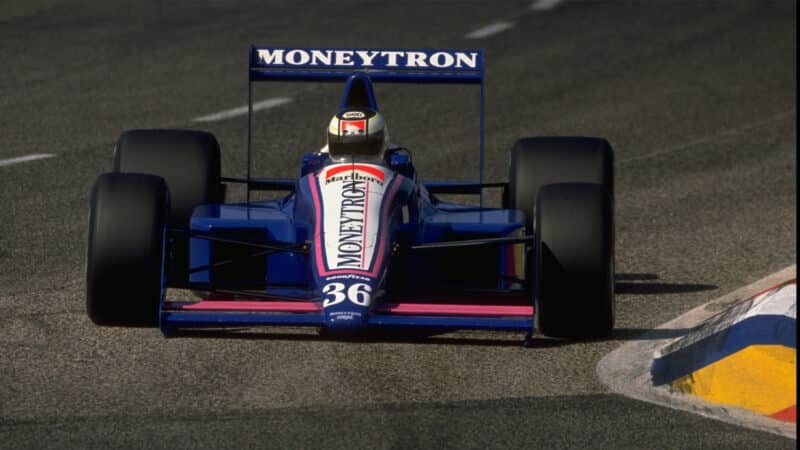
Johansson took Onyx’s first points at Paul RIcard
Getty Images
“It was a pretty stout group of cars and drivers and teams, too. Often those who made it through ended up mid-grid in real Qualifying.
“Perhaps only qualifying at Indianapolis had similar pressures.”
Johansson fell at this tricky first hurdle at Imola and Monaco, too, and was applauded by the other teams when finally he made the grid in Mexico City.
He had, however, been optimistic throughout.
“My terrible [1988] season at Ligier had made the landing a little bit softer,” he half-jokes. “But also I knew that my friend Alan Jenkins had designed an incredibly good car: nimble, easy to drive, easy to dial in, and with a good operating window.
“Once we began to sort its reliability…”
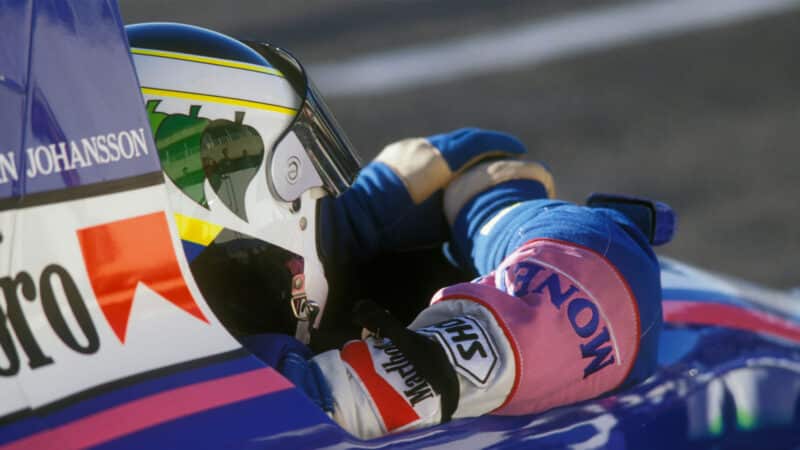
Estoril podium was a shock result for team
Getty Images
He finished fifth in June’s French GP at Paul Ricard.
Sadly, however, DNPQs at the subsequent British GP – plus unexpected fifth and sixth places by ‘for the chop’ Minardi – condemned Onyx to yet more Friday morning torture during the season’s second half.
And then Johansson qualified 12th at Estoril in late September.
